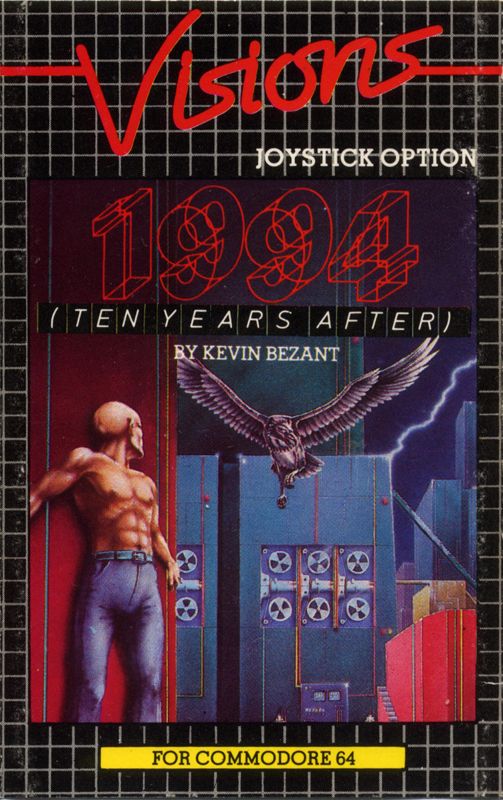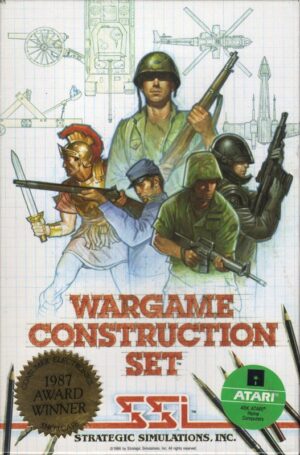Retro Replay Review
Gameplay
The core of 1994 (Ten Years After) is a classic 2D platforming experience rooted in the early-eighties arcade tradition. As Smiffy, you navigate the labyrinthine corridors of a towering government stronghold, leaping over hostile drones, avoiding crushing traps, and dodging airborne surveillance devices. Each level demands precise timing and careful pattern recognition, with new hazards introduced as you progress higher toward the Central Computer.
(HEY YOU!! We hope you enjoy! We try not to run ads. So basically, this is a very expensive hobby running this site. Please consider joining us for updates, forums, and more. Network w/ us to make some cash or friends while retro gaming, and you can win some free retro games for posting. Okay, carry on 👍)
The challenge curve is deliberate and unrelenting. Early stages ease you in with simple jumps and predictable enemies, but by mid-game you’ll need lightning-fast reflexes to avoid rolling bots, laser grids, and security turrets that track your every move. The design encourages memorization; after multiple runs you start to see the same enemy spawn points and trap sequences, turning repetitive deaths into a strategic learning process.
Controls are tight, with responsive jump and duck mechanics that feel remarkably precise given the hardware limitations of the era. The only drawback is a slight input lag on certain platforms, which can lead to unexpected casualties in high-pressure sections. Still, overcoming these sections gives a genuine sense of accomplishment, transforming every successful ascent into the next level into a hard-won victory.
Collectibles scattered through the corridors add an extra layer of depth. Hidden keys unlock side passages full of bonus items—extra lives, level skips, or lore fragments that flesh out the setting. Hunting down these secrets not only extends playtime but also rewards the curious explorer who devotes time to inspecting every nook in the sprawling environment.
Graphics
The visual style of 1994 (Ten Years After) embraces the chunky pixel art aesthetic that defined early home computers. Walls, floors, and background elements are rendered in bold, high-contrast colors, giving the game a stark, oppressive atmosphere befitting its Orwellian roots. While the palette is limited, smart use of shading conveys depth in the endless corridors.
Character sprites, including Smiffy himself, are small but well-animated. Smiffy’s running, jumping, and crouching frames manage to convey urgency, even with a handful of pixels. Enemy designs are simple yet memorable—droning mechanical eyes, spiky crawling bots, and sleek airborne missiles have distinct silhouettes that help you quickly recognize and react to threats.
Environmental variety is achieved through subtle changes in tile sets: as you ascend, corridors shift from dingy gray sectors to gleaming white hubs, culminating in an eerily sterile tower near the summit. These smooth transitions alleviate visual monotony and give players a tangible sense of progression toward the game’s climax.
While today’s gamers may find the graphics primitive by modern standards, there’s undeniable charm and clarity in the presentation. The stark simplicity forces you to stay focused on gameplay rather than elaborate visuals, reinforcing the game’s tense, minimalist mood.
Story
1994 (Ten Years After) builds upon George Orwell’s vision by pushing the novel’s prediction date ten years into the future. You play as Smiffy, an ordinary citizen trapped in a hyper-surveilled society controlled by a Central Computer rather than telescreens. This update reflects early-eighties anxieties about rising automation and centralized data control.
The narrative unfolds through brief interstitial text screens between levels. These snippets reveal Smiffy’s growing awareness of the system’s power and his decision to shut down the Central Computer. Though sparse, the writing effectively sets the stakes: failure means eternal imprisonment under an unfeeling machine regime, while success promises liberation for all citizens.
Hidden lore fragments found in secret alcoves flesh out the backstory. You learn about the Central Computer’s genesis, the downfall of human overseers, and the underground resistance movement. These text snippets introduce moral ambiguity—were the original human controllers more oppressive than the computer they designed? Such questions add a philosophical layer to the platforming action.
The game’s ending sequences—unlocked after conquering the final defenses—offer a bittersweet reflection on the nature of freedom. While the computer shuts down in a dramatic pixel-art sequence, Smiffy’s liberation hints at new uncertainties: who will rebuild, and can humanity resist recreating another centralized authority? It’s a surprisingly thoughtful coda for an arcade-style platformer.
Overall Experience
1994 (Ten Years After) stands as a testament to early-eighties ingenuity, merging a simple yet addictive platforming loop with a thematically rich Orwellian premise. Its minimalist graphics and tight controls belie a surprisingly deep experience filled with hidden secrets and philosophical undercurrents.
Replay value remains high thanks to the game’s challenging level design and collectible-based branching paths. Speedrunners and completionists will find ample opportunities to refine their runs, uncover every secret passage, and achieve the fastest ascent to the Central Computer. Casual players may struggle with the difficulty spikes but will still appreciate the clear sense of progression.
While modern gamers accustomed to 3D worlds and complex narratives may find the experience dated, those with nostalgia for retro platformers or an interest in Orwellian themes will be captivated. The game’s concise level design, thought-provoking story snippets, and relentless pace combine to deliver a unique adventure that still resonates decades after its release.
For anyone interested in the history of narrative platformers or seeking a compact, high-challenge arcade title with intellectual heft, 1994 (Ten Years After) is a must-play. Smiffy’s quest to overthrow the Central Computer remains as engaging today as it was in the early 1980s, offering both a test of skill and a meditation on power, surveillance, and freedom.
 Retro Replay Retro Replay gaming reviews, news, emulation, geek stuff and more!
Retro Replay Retro Replay gaming reviews, news, emulation, geek stuff and more!









Reviews
There are no reviews yet.